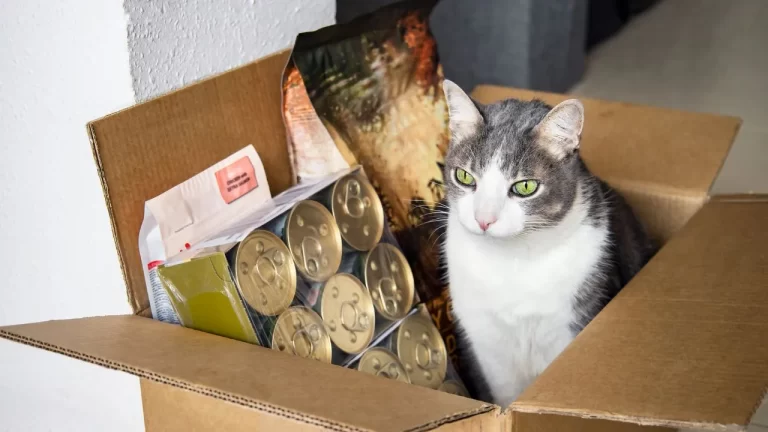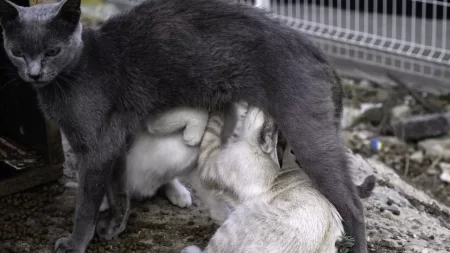The answer is no, you can’t buy cat food with EBT. EBT, Electronic Benefits Transfer, only allows you to use the voucher on human food.
Pet food is excluded from EBT, and using it may result in suspension. Unfortunately, even if you qualify for EBT, you won’t be able to feed your cat.
Exceptions or alternatives may exist. You may be able to buy pet food using EBT TANF (Temporary Assistance for Needy Families) payments. ATMs let you buy pet food. You may also purchase SNAP-eligible chicken or beef for your cat.
Free or low-cost pet food assistance programs are another alternative. Feeding Pets of the Homeless offers an interactive resource map to find pet food pantries and other pet-related community services.
Local shelters and rescue groups may also help. Seniors may get pet food, litter, and other supplies from the PetSmart Charity via Meals on Wheels.
Understanding EBT and What Can Be Purchased
EBT is a system that allows SNAP recipients to access their benefits electronically. SNAP is a federal program that helps eligible low-income individuals and families buy food for human consumption. SNAP benefits can only be used to buy food items that are intended for human consumption, such as:
- Fruits and vegetables
- Meat, poultry, and fish
- Breads and cereals
- Dairy products
- Snack foods
- Non-alcoholic beverages
- Seeds and plants to grow food for your household
Eligible human food items
SNAP benefits can be used at authorized retailers that sell food, such as grocery stores, convenience stores, farmers’ markets, and online retailers like Amazon and Walmart. You can use your EBT card to pay for eligible food items at the checkout.
Exclusions for pet food
However, there are some items that SNAP benefits cannot be used to buy, such as:
- Alcohol and tobacco products
- Vitamins and supplements
- Hot foods or foods prepared for immediate consumption
- Nonfood items, such as paper products, soap, pet food, etc.
Pet food is specifically excluded from SNAP benefits because it is not considered food for human consumption. Therefore, you cannot use your EBT card to buy cat food or any other kind of pet food.
Qualifying for EBT Benefits for Pet Food
Although you cannot use your EBT card to buy pet food directly, there may be some ways to qualify for EBT benefits for pet food indirectly. This depends on whether your cat is considered an assistance animal or a household pet, and whether your state has any specific regulations regarding pet food eligibility.
Assistance animal designation
An assistance animal is an animal that provides a service or emotional support to a person with a disability. Assistance animals are not pets; they are considered part of the person’s medical treatment plan and have legal rights to access public places and housing. Examples of assistance animals include guide dogs, hearing dogs, service dogs, psychiatric service dogs, emotional support animals, etc.
If your cat is an assistance animal that helps you with a physical or mental disability, you may be able to deduct the cost of its food from your income when applying for SNAP benefits. This means that you may receive more SNAP benefits than you would otherwise, which could help you afford cat food. However, this deduction is not automatic; you need to provide proof of your disability and your cat’s role as an assistance animal to your local SNAP office.
Pet food eligibility requirements
Even if your cat is not an assistance animal, you may still be able to qualify for EBT benefits for pet food if you meet certain requirements. These requirements vary by state and may include:
- Having a low income that falls below the federal poverty level or a certain percentage of it
- Having a household size that meets the state’s criteria
- Having a valid reason for needing pet food assistance, such as being elderly, disabled, homeless, etc.
- Having a limited number of pets that meet the state’s criteria
- Agreeing to spay or neuter your pets if they are not already
- Agreeing to follow the state’s rules regarding pet care and welfare
If you meet these requirements, you may be able to receive pet food vouchers or coupons that can be redeemed at participating retailers or distributors. These vouchers or coupons are separate from your EBT card and cannot be used interchangeably.
State-specific regulations
Not all states offer pet food assistance programs for low-income pet owners. Some states may have more generous or restrictive policies than others. Some states may have no programs at all. Therefore, it is important to check with your local SNAP office or animal welfare organization to find out what options are available in your state.
Where to Buy Cat Food with EBT?
If you qualify for EBT benefits for pet food, either through an assistance animal deduction or a pet food voucher program, you need to know where to buy cat food with EBT. Depending on your state and program, you may have different options to choose from.
Pet stores, supermarkets, and online retailers
Some pet stores, supermarkets, and online retailers may accept pet food vouchers or coupons as a form of payment for cat food. However, not all retailers may participate in these programs, so you need to check with them before you shop. You may also need to show your EBT card or other identification to verify your eligibility.
Some examples of retailers that may accept pet food vouchers or coupons include:
- Petco
- PetSmart
- Walmart
- Amazon
- Chewy
Farmer’s markets
Some farmer’s markets may also accept pet food vouchers or coupons as a form of payment for cat food. However, this may depend on the availability and quality of cat food products at the market. You may also need to check with the vendors or organizers before you shop.
Some examples of farmer’s markets that may accept pet food vouchers or coupons include:
- Greenmarket
- FreshFarm
- CUESA
Alternatives for Low-income Pet Owners
If you do not qualify for EBT benefits for pet food, or if the benefits are not enough to cover your cat’s needs, you may want to look for other alternatives for low-income pet owners. There are many resources and programs that can help you provide food and care for your cat without breaking the bank.
Pet food banks and pantries
Pet food banks and pantries are organizations that collect and distribute donated pet food to low-income pet owners in need. They may operate independently or in partnership with human food banks, animal shelters, or other agencies. They may offer free or low-cost cat food on a regular or emergency basis, depending on their capacity and availability.
To find a pet food bank or pantry near you, you can search online or contact your local animal welfare organization. Some examples of pet food banks and pantries include:
- Pet Food Bank of Austin and Travis County
- Colorado Pet Pantry
- Seattle Humane Pet Food Bank
Low-cost veterinary clinics
Low-cost veterinary clinics are clinics that offer affordable veterinary services to low-income pet owners. They may provide basic services such as vaccinations, spay/neuter, microchipping, deworming, etc., as well as emergency care and treatment for illnesses and injuries. They may operate independently or in partnership with animal shelters, rescue groups, or other agencies.
To find a low-cost veterinary clinic near you, you can search online or contact your local animal welfare organization. Some examples of low-cost veterinary clinics include:
- ASPCA Mobile Spay/Neuter Clinic
- Humane Society Veterinary Medical Association Rural Area Veterinary Services
- Best Friends Animal Society Community Clinics
Community outreach programs
Community outreach programs are programs that offer support and education to low-income pet owners in their communities. They may provide information and resources on pet care, behavior, health, nutrition, etc., as well as referrals to other services and programs. They may also organize events and activities to promote responsible pet ownership and animal welfare.
To find a community outreach program near you, you can search online or contact your local animal welfare organization. Some examples of community outreach programs include:
- Pets for Life
- Pets Empowerment in Transition Services
- Pets of the Homeless
Conclusion
In conclusion, you cannot buy cat food with EBT directly, but you may be able to qualify for EBT benefits for pet food indirectly if your cat is an assistance animal or if your state has a pet food voucher program. You may also be able to find other alternatives for low-income pet owners, such as pet food banks, low-cost veterinary clinics, and community outreach programs. By exploring these options, you can ensure that your cat gets the food and care it deserves without compromising your own well-being.







